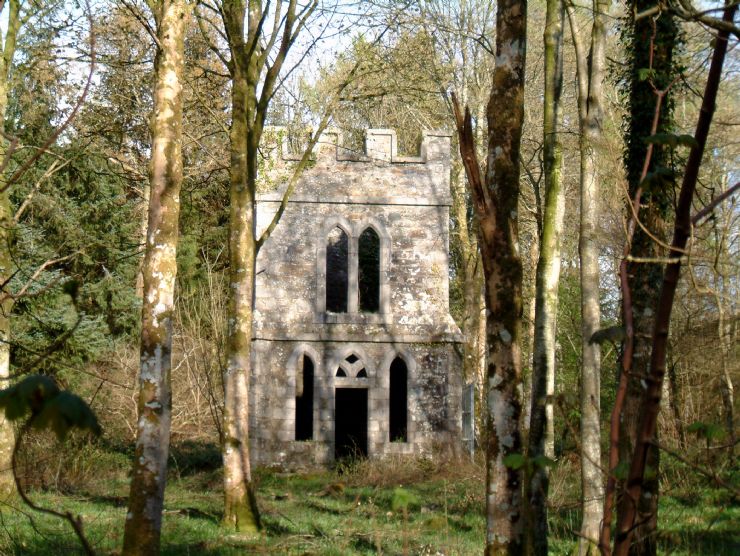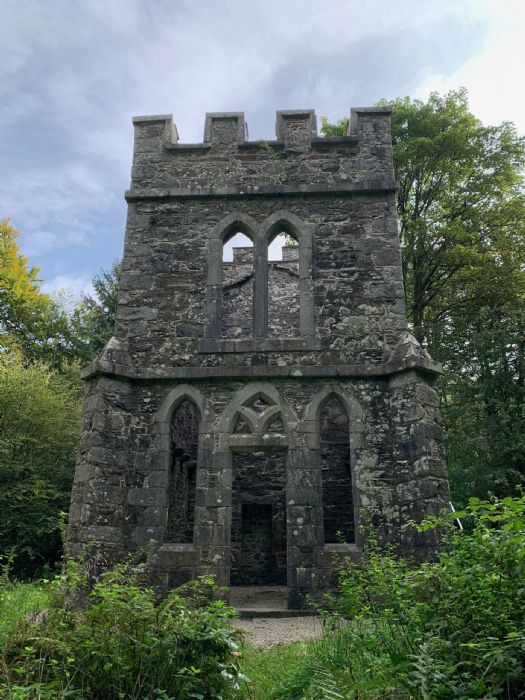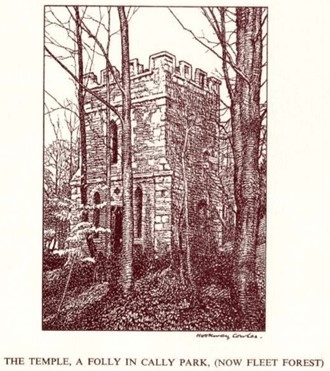The Cally Temple
Cally House was designed for James Murray by Robert Mylne and was built in the 1760s. The Temple was constructed in the last years of the 1780s.
|
|
Tucked away in woods behind Cally House (now the Cally Palace Hotel) is a little gothic tower, known as The Temple, that was built as a folly, to be seen from the mansion house across the Cally parklands. The Temple is now surrounded by trees. The Cally grounds were laid out by the architect-turned-landscape designer James Ramsay, who died in 1820, and the folly is attributed to him, although there is little evidence of this. The Temple has an external staircase leading up to the first floor. The Temple was once occupied by a farm-servant, William Todd, described by a descendant as a drover who looked after the estate’s black cattle. He lived in the tower from around 1782 to 1792, and brought up his family there in that period. |
Later The Temple was said to have been home to ‘the person who had charge of the ornamental ground’.
|
|
|
|
|
In 1939 the Cally House estate was bought by the Forestry Commission, and in the 1930s the mansion (by now remodelled several times) opened as a hotel and was renamed the Cally Palace. The grounds became home to commercial plantations, and the southern third of the grounds was later cut off by the construction of the A75. The little temple slumbered on, dilapidated and roofless, but it lost none of its charm, and in 2015 a restoration project was completed that saw it consolidated and secured for the future. The project was overseen by the Gatehouse Development Initiative, which worked with the Forestry Commission and a dedicated group of volunteers to secure funding. The architect for the project was Michael Leybourne, of Savills Dumfries office. Few views of the Temple are known.
This is William Todd jnr., son of William Todd the farm servant whose family occupied The Temple for 10 years or so. |
|
|
To the left is a vignette of the tower drawn by illustrator Hookway Cowles to feature on the front of a Christmas card, sent in the second half of the last century by the then owner of the Cally Estate, Mrs Elizabeth Murray Usher (1903-1990), a descendant of James Murray. The drawing is signed ‘Hookway Cowles’, (1896-1987) who was born in Yorkshire and had a peripatetic childhood as the son of a clergyman. He studied art and became an illustrator, working with a number of publishing houses to design dust-jackets, and produce cover images for fashionable magazines. Most famously, he worked on an illustrated edition of the novels of H. Rider Haggard for Macmillan Books. How he came to draw local scenes for Scottish Christmas cards is unknown.
|
Much of the above text was written by Karen Lynch. Her full posting can be seen at :
https://thefollyflaneuse.com/the-temple-cally-house-gatehouse-of-fleet-dumfries-galloway/





